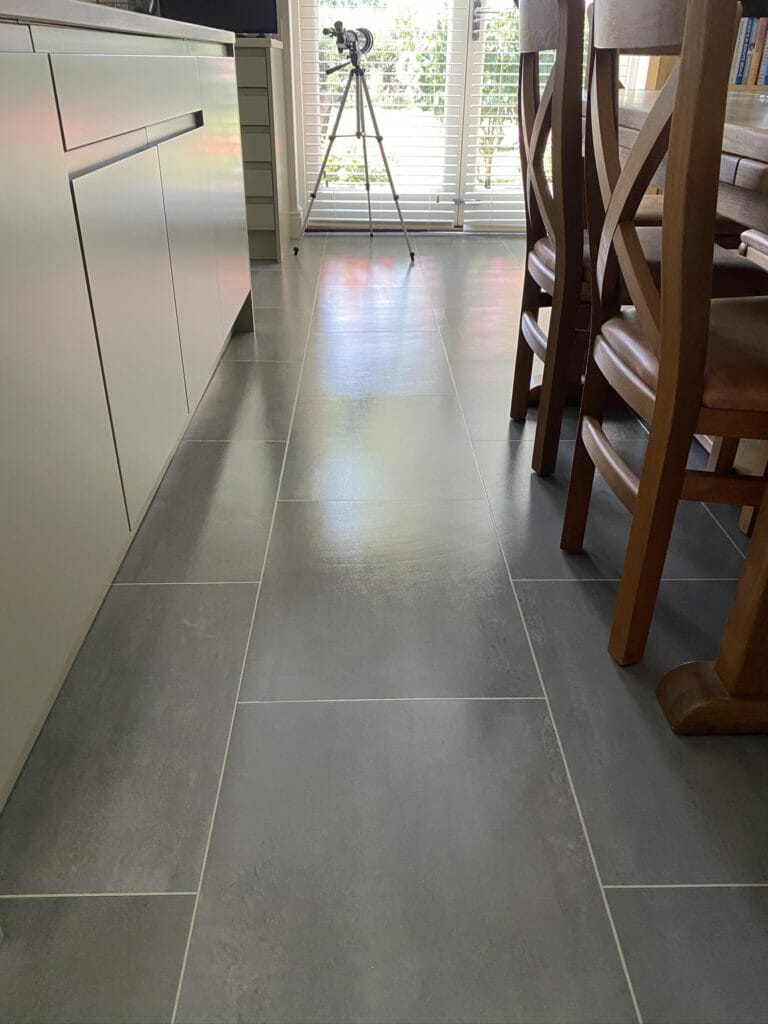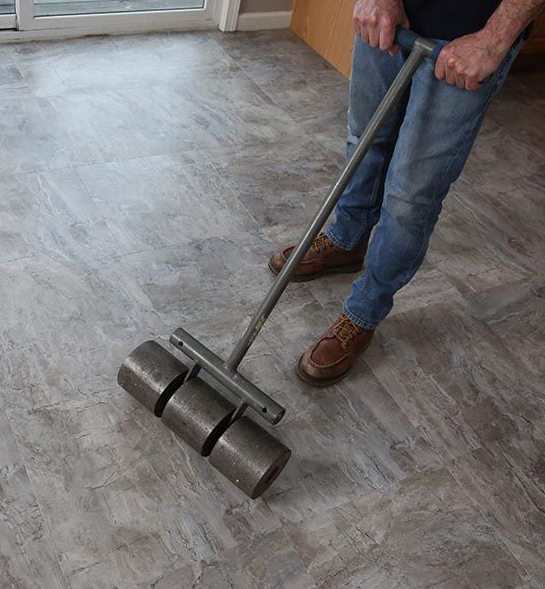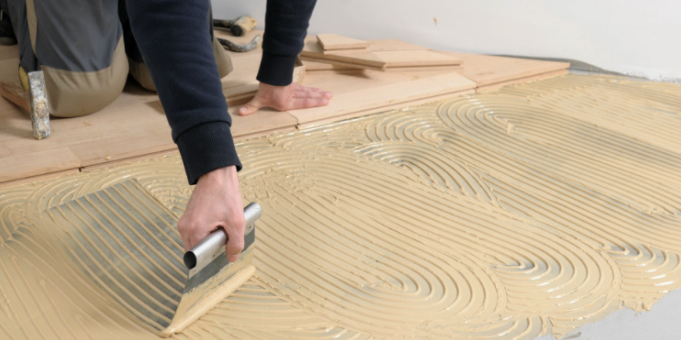
You have been enjoying your LVT floor (Luxury Vinyl Tile Floor) for many years now. Brand names include Karndean, Moduleo, Amtico and Harvey Maria to name but a few.
As your floor age, you have noticed some unusual lines appearing. At first, they were hardly visible, but it seems they have become more prominent over time.
In some cases, cleaning and re-applying a dressing to the floors can cause these marks to only become more visible.
This article I wrote is based on my experience as a floorcare professional since 2005, when I started Art of Clean in Cambridge.
The mistake many people make is to think that the problem lies on the surface of the tiles when, in fact, it lies below the floor. (in most cases)
To better understand this problem, it would be best to work through the installation process, so you get the full picture.
LVT, also known as Luxury Vinyl Tiles, are made of layers of specialised plastics and rubber compounds with a wear layer on the surface. Depending on the vinyl Tile you have installed, you will have different wear layers. The wear layer is a coating of Polyurethane usually between 0.2mm – 1 mm thick.
These tiles must be laid on a very smooth and flat subfloor. Subfloor means – the floor below the floor.
 In most cases, the subfloor is a coating of Smoothing Compound that is a powder mixed with water, and the liquid is then poured over the floor to self-level. In most cases, the application of a primer is required before the smoothing compound is applied. This ensures the smoothing compound adheres well to the floor. For the best result, the levelling/smoothing compound should be rolled out using a spiked roller. This gives a super smooth finish to the floor. This is sometimes the case that if the smoothing compound is not mixed or applied right that this can cause marks on the floor surface.
In most cases, the subfloor is a coating of Smoothing Compound that is a powder mixed with water, and the liquid is then poured over the floor to self-level. In most cases, the application of a primer is required before the smoothing compound is applied. This ensures the smoothing compound adheres well to the floor. For the best result, the levelling/smoothing compound should be rolled out using a spiked roller. This gives a super smooth finish to the floor. This is sometimes the case that if the smoothing compound is not mixed or applied right that this can cause marks on the floor surface.
The smoothing compound is now left to dry and cure
If a wood subfloor is prepared the standard would be to use floor grade plywood, and the joins are then filled in with a filling compound, then sanded smooth.
Now the subfloor is ready the LVT tiles can be stuck to the subfloor.
Here is another opportunity where some things can go wrong. Floor manufacturers will specify the standard of the glue application.
The trowel that the glue is applied with has small notches/gaps in the blade that allows the right amount of glue on the floor.
 If more glue is required, the gap size will usually be bigger. If the wrong trowel/blade is used the lines of adhesive may be too big and leave lines in the tiles as explained below.
If more glue is required, the gap size will usually be bigger. If the wrong trowel/blade is used the lines of adhesive may be too big and leave lines in the tiles as explained below.
The specification will also set out how long the glue should be left to dry before the tiles are laid down.
Would the glue be left to dry for too long, lines of glue that was formed through the notches or gaps on the glue trowel will be impossible to even.
What should happen is that the glue is pushed smooth under the tile when it gets laid.
This is done by using a heavy roller over the tiles once the tiles are all down.
The lines may stand proud under the tiles if the glue is left to dry too long, and even a heavy roller will not push it down enough.
We have soon these lines many times in commercial buildings on Sheet Vinyl. Some fitters overcome this problem on bigger floors by applying the glues as specified and roll the adhesives out using a roller like a paint roller before the vinyl is laid. Some may say this is not the advised practice though it does reduce the risk of lines on the floor.
At first, the lines are not visible as the tile is rigid and do not shape. Over time, the tile forms to the shape of the subfloor, and this is when the glue lines become visible on the tiles. It is sometimes referred to as telegraphing.
The best way to explain this is to compare it to a wooden shelf. If you load it with items that are too heavy for the shelf, it may at the first hold up the weight, but if you return to the shelf a few days later, the shelf would have stared bowing under the weight.
How to fix the lines on my Luxury Vinyl Tiles cause by telegraphing?
Sadly, the lines cannot be removed. The only way to get rid of the lines would be to uplift the tiles and smooth the floor then re-instate new tiles.
 Why do these lines become more prominent after a clean and seal to the LVT?
Why do these lines become more prominent after a clean and seal to the LVT?
Floor dressing and finishes applied to a Luxury Vinyl tile will enhance the sheen level if the floor. Even if a matt finish is applied, we do find the sheen increase after each coat, and you will find that most floors will require 2 – 4 coats to get a uniform finish.
The sheen makes all marks on the floor more prominent, and this will be further enhanced by light entering the room or artificial lights. More windows and more lights in the room may make the imperfections in the floor much more visible.
For further advice or information on our Carpet and Soft Furnishing care, please do not hesitate to contact the Art of Clean team on 01223 863632 in Cambridge. Our services include Carpet Cleaning, Upholstery Cleaning, oriental and area Rug Cleaning, Curtain Cleaning, Patio and Driveway Pressure washing, Leather Cleaning, Stone and Tile Floor Cleaning and Wood Floor Sanding and Restoration. We also supply new flooring and carpets through our sister company Art of Flooring. Our Dry-Cleaning service is provided by Farthings Cambridge

For further advice or information on our Carpet and Soft Furnishing care, please do not hesitate to contact the Art of Clean team on 01223 901551 in Cambridge. Our services include Carpet Cleaning, Upholstery Cleaning, oriental and area Rug Cleaning, Curtain Cleaning, Patio, and Driveway Pressure washing, Leather Cleaning, Stone and Tile Floor Cleaning, and Wood Floor Sanding and Restoration. We also supply new flooring and carpets through our sister company Art of Flooring. Farthings Cambridge provides our Dry-Cleaning service